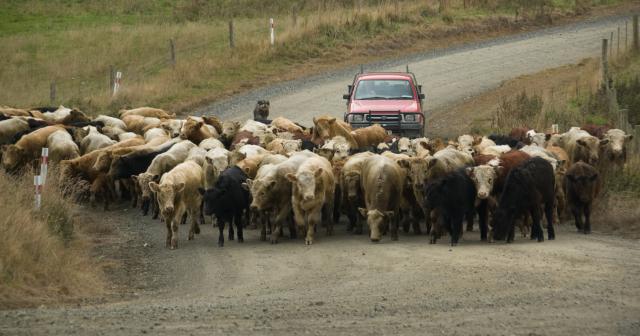Foot and mouth disease causes painful lesions on cloven-hoofed animals including sheep, cattle, pigs and goats. Infected animals are destroyed to halt the spread of the infection.

Last updated June 2025
Need to know
- B+LNZ is now part of an Operational Agreement between the agricultural sector and the Government on foot and mouth disease readiness and response, following a sheep and beef farmer vote to approve B+LNZ joining the agreement. Keeping foot and mouth disease out of New Zealand is still the number one priority but the agreement helps ensure we’re as prepared as possible in the unlikely event it does arrive and gives sheep and beef farmers have a voice in decision-making about how any response effort would be funded and the money spent.
- Foot and mouth disease outbreaks were reported on farms in Germany, Hungary and Slovakia in early 2025 – and in countries closer to home such as Indonesia in the past few years.
On-farm precautions against foot and mouth disease
- Don’t allow visitors who have been on farms or in contact with farm animals while overseas in countries that have foot and mouth disease onto your farm for at least a week after their arrival in New Zealand.
- Ensure stringent on-farm biosecurity protocols are in place and adhered to.
- All animal movement records and animal health declarations must be up to date. For cattle and deer ensure your NAIT recording is up to date. For all other livestock species use the electronic ASD (eASD) functionality provided by OSPRI.
- Do not feed uncooked food waste to pigs.
- Become familiar with the symptoms of foot and mouth disease and do not hesitate to call 0800 80 99 66 or a vet.
Key resources
- MPI's advice to farmers and livestock owners about foot and mouth disease
- Drystock biosecurity guidelines (PDF, 3.1 MB)
- Biosecurity sign for your property (PDF, 147 KB)
- Biosecurity planner for your farm (PDF, 298 KB)
What does foot and mouth disease look like?
See images below (note some include graphic content):
- cattle beast mouth
- cattle beast mouth
- cattle beast hoof
- sheep foot
- sheep mouth (severe case)
- sheep mouth (mild/moderate case)
B+LNZ’s role
B+LNZ is part of an Operational Agreement that sets out readiness and response activities for FMD. As part of the agreement we:
- continue to undertake existing work on response planning, including things like staff training, business continuity planning, and participation in foot and mouth disease exercises and simulations
- agree to contribute funding to FMD readiness and response
- have a direct, legally-binding say in decision-making for foot and mouth disease readiness and response
- readiness activities are those taken to ensure we’re prepared with appropriate systems and resources to deal with the response to an outbreak
- response activities would be those directly related to an outbreak of disease
We also have a role play in raising farmer awareness around the signs of foot and mouth disease and having good on-farm biosecurity plans in place.
The Ministry for Primary Industries (MPI) still leads the setting of standards for border inspection and treatment requirements for goods crossing the New Zealand border. However:
- B+LNZ works closely with MPI to ensure every practical step is taken to prevent foot and mouth disease entering the country.
- NZ’s border biosecurity is stringent by world standards and where necessary travellers are not permitted to bring in meat products or passengers will be directed to specific processes of questioning, baggage search and disinfection. Additional checks will also apply to mail products and cargo from affected countries.
- B+LNZ will continue to hold the Government and our border agencies to account because of the significant impact this disease could have.